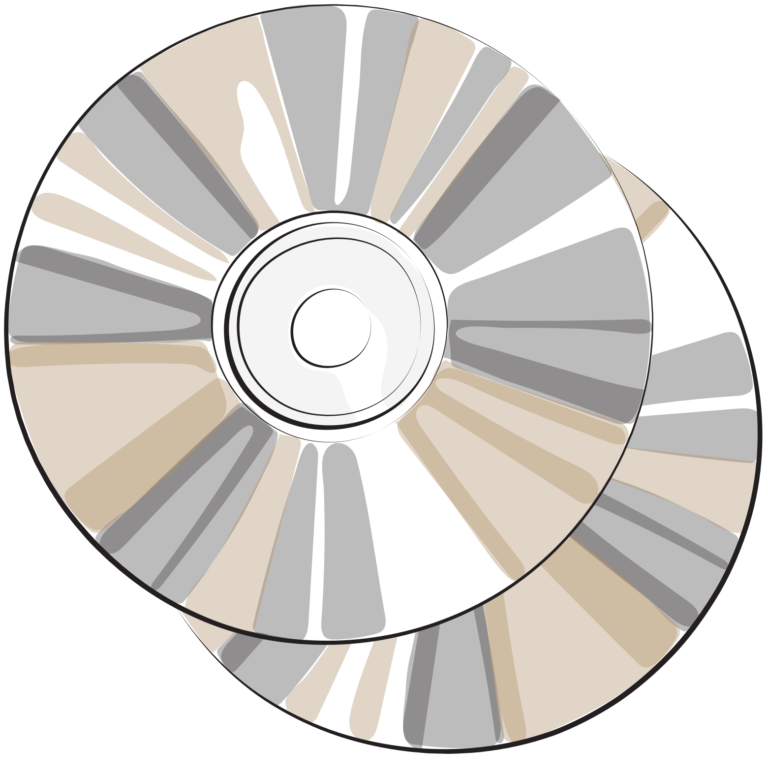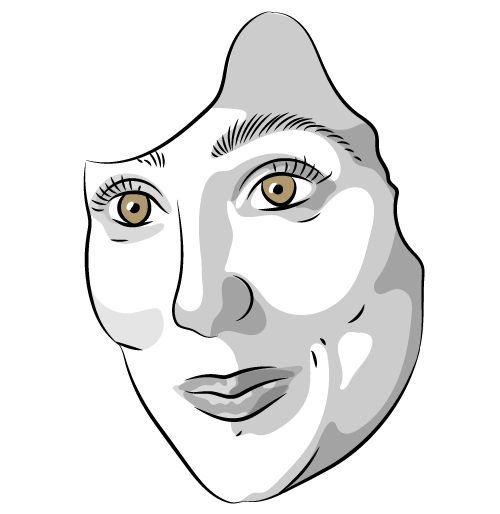A Symposium on Soundtracks

On y va!
The piece of music I have in mind lasts only forty-five seconds, which is shockingly brief measured against the inner world it evokes. In what I now know is a fragmentary motif, a few lowing bass notes rise like bubbles from the bottom of a pool, becoming increasingly ragged as they approach the surface. They get close enough to one another to imply melancholy harmony before they dissipate. The riff repeats only once, a little more achingly. Then the bass hands its figurative duties over to a dulcimer, whose jaunty fatalism carries the mood forward even as a more deliberate structure begins to eat away at the oceanic resonance of those bass notes. As the bass recedes into a supporting role, providing squiggly accents at odd intervals, a mental image slides back into inaccessibility too. In my memory, the soundtrack, by Henny Vrienten, to George Sluizer’s 1988 film The Vanishing, was an expanse of fretless bass only, mournful and spare, diaphanous and purplish, like neon light filtered through glass bricks. I feel a spasm of disappointment in realizing its magic is more contained than I recalled, that the film’s music on the whole is not remarkable enough to justify a soundtrack album in which I could wallow between viewings.
The transporting seconds I remember accompany the movie’s protean establishing shots. First, hearing only ambient sound, we see a twig mantis clinging to a tree trunk against a background of blurred yellow fields. The bass arrives as the camera floats over the red rooftops of a small village and lands on an elevated roadway, where a couple named Rex and Saskia are driving to a vacation home in the South of France. They’re festively killing time with some alliteration-based word game, but woven into their interactions is a petty conflict about who should be driving. They end up running out of gas in a tunnel, and Rex abandons his girlfriend with a measure of sadistic fulfillment as she frantically searches for a flashlight. This little trauma is a rehearsal for the bigger one to come. The soundtrack works according to this logic, too, echoing a central theme in different instrumental voices, with varying degrees of recognizability. We see characters repeat the same patterns in different contexts with very different resonances, and our hearts sink a little more each time. There’s no eruption of violence, just repetition, missed opportunities, and the intervention of fate.
But somehow those forty-five seconds seem to exist for their own sake. Their music has stayed with me because it touches, perversely, on a deeply personal notion of freedom. Rex and Saskia strike me as adult versions of the students in the stock photos that illustrated my high-school French textbooks. I felt a twinge of longing on first beholding them, as if they were emissaries from a world of meaningful idleness. There they were, out in public, radiating the delicious languor I felt on summer days spent reading with the blinds closed. These mysterious semblables wore crewneck sweaters with the names of Ivy League colleges, hung out under plane trees in dusty squares, made plans to windsurf and go to house parties. Later on, the ostentatiously uneventful films of Éric Rohmer, often set during summer vacations, articulated what I found so magnetic in these images of dailiness: blithe indifference to the internalized requirements of managerial bureaucracy. Even before I started working, a reflexive drive to busyness defined my experience of free time as a terrifying void to be filled. Behind the superficial glamour of difference for its own sake, these figures seemed to correctly perceive the dignity of loitering.
The bit of The Vanishing soundtrack I’m trying to account for returns me to my initial numinous contact with this unaccounted-for space. It represents something unthinkable in my native cultural imagination, where simply living is never enough. Americans, particularly beginning with my generation, are conditioned to experience everyday anxiety as an individual pathology: it’s a personal defect, your private property, not the obvious consequence of having every aspect of your life audited for the satisfaction of some supervisory intelligence. We’re convinced that a moment of inattention, a lapse of industriousness, a gap in the résumé leads inexorably to expulsion from the formal economy, or justifies our preemptive exclusion from it. Only relentless paranoia, we’re told, can save us from the horrible outcomes guaranteed and ceaselessly expanded on by the present social arrangement. Fretless bass— that rightfully clowned-upon instrument—here crystallizes the first time I could conceptualize these ugly feelings not as an isolating condition, or even as an accidental consequence of a chaotic exterior world, but as evidence that things were working, for a tiny minority of the world’s population, exactly as intended.
Given its place in my psychic economy, my desire to buy The Vanishing’s soundtrack in order to better luxuriate in the world it evokes is probably less a curatorial flex than a symptom of the same unfreedom, the variety that sells your own experiences back to you. Efforts are always under way to bring back into the light things ennobled by neglect; once procured, maybe they fall into an even more profound disuse, if only because we have some new abstraction to lust after. (If I were merely looking for music with a similar period vibe or tonal palette, I could turn to the German jazz label ECM, which recently, after years of resistance, made its catalog available for streaming.) But perhaps the ultimate commodity, the one looming behind the objects or experiences I purchase, is a glimpse of a world in which I have control over my time, where I can make meaningful choices about things other than consumption. In theory, endless vistas have opened up, but the true object of my desire is nowhere to be found in the leveled rubble of content.
Brandon Bussolini

On sound and freedom
The first week of April in Toronto, we had an ice storm. Not unusual for a city that spends much of the year in a deep freeze, but still: there was no sign of summer, let alone spring. But a week later, the sun came out. We— it is a collective effort—broke a high of sixteen degrees Celsius. Though it wasn’t heat-wave hot, the potential electricity of summer was enough to excite cold and weary Torontonians. If only for an afternoon, the streets caught a vibe.
Naturally, some friends and I took advantage of the sudden brightness. First we visited a Mexican taqueria proudly hosting a five-person band singing in English, Spanish, and a hybrid of the two; next, a café in Little Italy where, on the corner outside, a brass trio filled the air with jazzy pop covers, and a small congregation materialized as they riffed on Michael Jackson’s “Billie Jean.” In Kensington Market, a massive speaker was propped up in the entryway of a bodycare storefront, two young employees deejaying from inside. Best of all were their knowing smiles as Big Freedia’s voice commanded the attention of streetside listeners before the beat dropped on Drake’s premature summer anthem “Nice for What.”
But the highlight was “Money Jane,” a nationwide 2002 hit by Toronto DJ collective Baby Blue Soundcrew that bears one of the city’s most instantly recognizable sonic textures. As it played, black Torontonians spanning generations smiled, swayed, and rapped along to Sean Paul and the Toronto MC Kardinal Offishall. “It was a beautiful thing to hear that song coast to coast on mainstream radio,” Jully Black, who sings the hook on “Money Jane,” told journalist Anupa Mistry about the track’s success. “It proved to Canada that we were worthy of being booked on stages that black artists weren’t being booked for.”
Regarding the track’s dancehall-influenced fingerprint on Toronto’s musical history, Kid Kut of the Soundcrew put it simply: “That was what Toronto sounded like, to me.”
At a lecture here last year, historian Robin D. G. Kelley addressed the importance of sonic memory to circumscribed place-making. “All the placards of segregation could not stop a black voice,” he said, pointing to the flaws of segregation in public spaces—in this case, city buses and the sheer power of voice, which could not be restricted, no matter where black riders sat. Kelley’s point was a simple one: voices carry. Sounds of life, and of love and protest and the everyday, will always bleed through.
Angela Davis shared a similar sentiment in March 2018, framing voice as the thing that will save us when we cannot figure out how to be free. “Like Nina Simone says, ‘I wish I knew how it would feel to be free,’” she mused. “And that’s why black artists are so important; they show us that. If you think about it, it’s the music that engages us. It’s the music that makes [us] feel what we cannot yet express. And in this age, how do we learn to feel as if we are connected with each other? How do we learn about relationality? How do we learn that we are what we are only because of the communities we are a part of?”
A few years ago, a couple of Toronto artists—Aubrey Graham, a.k.a. Drake, and Abel Tesfaye, a.k.a. the Weeknd— broke into American, then international markets. They were by no means the first and will by no means be the last, but they’re complicated. The only constant in Toronto is that the city is perpetually uncertain about what to do with the people who put it on the map, and in spite of talk of a citywide uprising, of game-changing industry rejuvenation and the cracking open of previously rigid barriers, Toronto is as indefinable now—as noncompliant—as ever.
Many writers, myself included, have insisted on the inevitability of a tipping point. I have meditated on the place-making qualities of Drake’s under-loved songs: the mention of the Scarborough Bluffs in “Believe Me”; the menacing snarl on “Worst Behavior”; the bursting, anthemic “Know Yourself ”—but perhaps it’s on “Trophies,” which isn’t explicitly about Toronto, that he most succinctly presents the fraught relationships the city’s oft-marginalized cultural producers have with the ideas of home and success. “Can I tell the truth?” he asks.
If I was doing this for you, then I’d have nothing left to prove.
Nah, this for me, though.
I’m just tryna stay alive and take care of my people.
And they don’t have no award for that […]
I just do it ’cause I’m ’posed to, nigga.
Toronto is a peculiar city in terms of geography, identity, and cultural legacy. It is at once just beginning to make its presence known elsewhere and burying itself alive at home; daily, it seems, the city announces a new development or the teardown of a long-loved corner or storefront or block or neighborhood. It’s a city of hard living and promises of making it. Now more than ever, we’re told that breakthrough and mobility are possible. So we work. But what happens when breakthrough turns the city’s sonic lifeblood into a lucrative marketing tool for someone else’s gain? What happens when the sounds of your life—the music, the diaspora-derived language, the named and freshly extinct sites of interaction and home-building—are extracted, leaving nothing behind but a deafening silence?
“Geography then is not just an empty container or a violent cartography; something else is going on,” writes Katherine McKittrick in “I Entered the Lists… Diaspora Catalogues”: “there is something about geography that might also reflect the skin, bones, hair, blood, and muscles of our life forms.” Indeed, in Toronto, the geography of creation itself—the makeshift studios in basements and closets—is confined, unevenly distributed. Frustrations arise. Those who can migrate do, generally to New York or Los Angeles. And like loss of public space, the disintegration of a sonic lieu de mémoire is no small thing. Nightlife venues are vanishing before our eyes; other sites of congregation are increasingly criminalized. Even Manifesto, Toronto’s premier music festival, has downsized, relinquishing usage of the Yonge-Dundas stage. WayHome, a festival that takes place just outside the city, is on indefinite pause. At the height of its buzz, Toronto is a place silenced.
Last weekend, while waiting for a ride home, I found myself overcome by unexplainable emotion. Sitting in a booth in a nondescript shisha café, I took in my surroundings: on the first floor of the café Tanzanian singer Ray C was playing on a big screen; on the second, Cardi B liked it like that; and I could barely make out a tinny, fluteheavy instrumental from the third floor. Shisha cafés in Toronto are among the few casual, affordable, black and brown immigrant–run establishments left, and these, too, are being hastily shut down. It’s only a matter of time before this one meets its fate too.
“I think smoking shisha is just another everyday thing that you can do,” Ali, owner of Habibiz, one of the city’s most famous shisha spots, told Huda Hassan for The Fader in 2016 about the wave of closures. “I don’t drink alcohol, so what am I supposed to do now? Go hang out in parking lots?” Ali also works as Drake’s personal shisha artisan, known to test reactions to new releases from the OVO camp at the café-cum-club. Maybe Habibiz will outlive the raids and disappearances; maybe it won’t. What comes next remains unsettled. Where now?
Amani Bin Shikhan

On canons on canons
The twelve-times-platinum-selling Forrest Gump: The Soundtrack might be the perfect soundtrack album, in the sense that I can explain it only by invoking its cinematic analog. Whenever someone mentions Robert Zemeckis’s gargantuan movie, I flash to the scene of Richard Nixon shaking Forrest’s hand and intimating, “I know a great hotel for you to stay in.” That line is followed by a cut to Forrest watching the Watergate break-in, just in case you don’t catch the reference, which is in turn followed by a tilt down to stationery that reads “Watergate Hotel,” just in case you still don’t get it. The movie assumes its viewer is aware of only the slice of American history it presents, if that.
And the soundtrack, especially in its disc-one tour through “Blowin’ in the Wind,” “Fortunate Son,” “Respect,” and “California Dreamin’,” feels similarly obvious. Forrest Gump tries to wrap itself in the historical poignancy of those songs and trade on their warmth, but its superficial treatment warps them: the needle-drops sound intentional without feeling active or personal. Sure, “Mrs. Robinson” is a perfect song in a vacuum, but the movie swaps its finger-picked propulsion and effortless melodic line for the song’s tangential association with infidelity, thanks to The Graduate. It’s on the Forrest Gump soundtrack only because it was already on a better soundtrack. The film is meant to be broad, of course, and no one wants to shell out for Three Dog Night’s deep cuts, but the sum total of the soundtrack is a backward assembly of only the call brands of the ’60s and ’70s, desperate for our collective memory in the same way a ’50s diner is.
So why did I spend $34.99 for an awkward two-disc package that wouldn’t fit into my spindle? I was interested in cultural history, but this album provided a shallow connection to both culture and history. My grandma wouldn’t allow any explicit lyrics in her car, but I could have found something more contemporary. No, above all, I listened to Forrest Gump’s music because it was iconic, a word that can always be replaced with something more precise. Iconic because of a pioneering quality? You mean historic. Iconic because a lot of people like it? You mean celebrated. Iconic because of a connection to an artistic rendering of a legendary figure? Technically you mean iconographic. The word’s creative power has been perverted into marketing shorthand for We shouldn’t have to explain why you need to buy this.
What attracted me to the album was the way these songs seemed like parts of a catalog that I should have owned already, even at eleven years old, because they were so—to use one more synonym—foundational. I wanted to possess what I saw as cultural capital, and in an age before iTunes single-song purchases, armed only with birthday money, I had to be calculating. Why buy an entire Byrds album just to have “Turn! Turn! Turn! (To Everything There Is a Season),” or an entire Doors album for “Break on Through (To the Other Side),” when I could buy one package that fulfilled all my needs? Why did I think this way? Was this curation somehow wrong? Why did songs of that era have so many parentheticals?
The answer to the first and most important of those questions is my parents, both as individuals who liked to cook to music from The Big Chill and as part of the generation that cemented the dominance of classic-rock radio in the mid-’80s. Often attributed to one station in Lansing, Michigan, the genre offered an olive branch to middle-aged listeners who were increasingly alienated by of-the-moment MTV and modern AOR: if the perfect mixture of ’60s and ’70s hits could be incorporated into a contemporary-rock playlist, then the reliable share of avid rock listeners could be supplemented by a demographic that was on the verge of aging out. Which, as we now know, worked all too well, as classic-rock moving from Michigan to Kansas City to Washington, DC, until the contemporary-rock part got left behind completely. By the time classic-rock radio made it to my morning carpool, it was on 99.5, the River. You know you have a deficit of inquiry and experimentation when the station name is supposed to conjure the sensation of floating toward a predetermined end of your day or life.
Because that’s what classic-rock radio did, right? Shaved the edges off a volatile, progressive time in American history by sculpting it into something calcified? Robert Christgau claims that the format was “invented by prepunk/predisco radio programmers who knew that before they could totally commodify ’60s culture they’d have to rework it—that is, selectively distort it till it threatened no one.” In the process of exalting and elevating the muscular Led Zeppelin or the harmonious Eagles, classic-rock radio downplayed the more overtly political, the more daringly trippy, the less traditionally arranged, and, well, the more African American music of that period. This was the regressive songbook that had been selected for me, that asked me to trust that it really was “music that would stand the test of time.”
And just as some professional had convinced me that a Pink Floyd double play was perfect for coping with rush hour, someone else had pretested every song, on soundtracks like Forrest Gump’s, for emotional pairing. If the hand-me-down music I grew up with was a canon, every film soundtrack was a canon validated by another canon. The situations for which I cued up the music began to ape the experiences I saw in the films. I knew Radiohead shared my tragic understanding of love when I turned on Romeo + Juliet. I knew the Cars were exuberant enough for prom because that was the vibe they established in 200 Cigarettes. I knew Cat Stevens was a wistful companion to a college send-off thanks to the Almost Famous CD. This kind of mood placement sounds corny or impatient now, but it occurs to me that it might be the actual goal of most soundtracks. If, as Spotify claims, half of streamers’ listening time is devoted to curated playlists, maybe I was ahead of the curve.
I wasn’t tracking all of this in the fourth grade; I barely understood how fractions worked. But even as it stayed in my rotation, I had a sneaking suspicion that Forrest Gump: The Soundtrack was something I would graduate from. As hard as it worked to fix an entire era in amber for people who hadn’t lived through it, I could see the strings, feel the condescension. So at some point I shed it because I believed music existed, somewhere, that could move me more than “Aquarius/Let the Sunshine In” did. As my life experience expanded, the music of my life had to expand with it. A child understands new words at the rate that he understands the necessity for them. Forrest Gump: The Soundtrack might have been a fine accompaniment for touch football, but I eventually had to find complements for friendship, lust, love, doubt, faith, the future, and death. In profound and spiritual ways, relying upon only what other people had selected for me would no longer cut it. I had to search for myself.
Which is why, in adulthood, no one’s favorite album is a soundtrack. Compilations of songs from films can be historical documents or scene syllabi or musical macaroons or self-contained artistic statements. But they’re never yours.
Christopher Bowes

A night at the opera
In the 1987 romantic comedy Moonstruck, Italian American Brooklynite Ronny, played by Nicolas Cage, invites Loretta, played by Cher, to New York’s Metropolitan Opera to see Puccini’s La bohème. “I love two things,” he tells her. “I love you and I love the opera. Now, if I can have the two things I love together for one night, I would be satisfied to give up—oh Christ—to give up the rest of my life.” The scene ends with a joke: Loretta, a native New Yorker, doesn’t know where Lincoln Center is.
Before taking my own Brooklyn-born, Italian American opera-neophyte boyfriend to the Met to hear La bohème, I played him a YouTube clip from Moonstruck. He said, “In this scenario, you’re Nic Cage and I’m Cher, right?”
Right. I wanted us, like Ronny and Loretta, to meet in front of the Met fountain to the strains of “Che gelida manina,” to be dazzled by each other’s beauty. (Check.) I wanted to hold hands during the snowy breakup aria, “Donde lieta uscì,” while soprano Angel Blue, as Mimì, scattered notes like the first droplets of a spring thaw, like tears. (Check.) Moonstruck, opera, and love itself are all magical convergences of the cheeseball and the sublime; the movie juxtaposes Dean Martin’s “That’s Amore” with the voice of Renata Tebaldi. I believed in that magic and, oh Christ, I got the two things I loved together, for one night.
During intermission, my boyfriend said, “It’s strange to be here, in your world, on your turf.” I didn’t yet know what he meant, but the turf question wasn’t just about my Manhattan and Brooklyn versus his Staten Island, my classical music versus his new wave and hardcore and shoegaze. It was about confidence and belonging versus insecurity and rejection. It was that I regarded his competencies and character as thrilling, attractive, and lovable, while he regarded mine—culture writer, opera commentator, woman intellectual— as the opposite.
“We are here to ruin ourselves, and break our hearts, and love the wrong people,” Ronny declares in Moonstruck, acknowledging the splendid complexity and imperfectibility of relationships. If I’d listened harder, I’d have heard what both La bohème and Moonstruck were trying to tell me: that love also encompasses infidelity, jealousy, betrayal, indifference, and contempt. Distracted by the romance, I should have paid attention to the whimpers of Loretta’s mother, Rose, suffering the death throes of her marriage to Cosmo. Rose’s anguished refrain is “Why do men chase women?” Meanwhile, over an accordion arrangement of Rodolfo’s courtship aria, Cosmo brags to his lover about closing a deal. Mona smiles perkily, supportively, adoringly: “You have such a head for knowing. You know everything.”
Rose knows. Lying awake in bed while Cosmo stonewalls her downstairs, she complains, “Now he’s gonna play that damn Vikki Carr record, and when he comes to bed he won’t touch me.” Carr’s 1967 hit, “It Must Be Him,” fills their home. Carr has just about convinced herself not to “be a chump” about her lost love, until her phone rings.
Let it please be him, oh dear god
It must be him or I shall die
Or I shall die…
There’s the answer to Rose’s question. Cosmo’s favorite torch song portrays a woman’s mindless, self-effacing desire for a man. It reveals his craving not for love, understanding, or sex, all of which his marriage offers, but for utterly selfless, flattering feminine adoration.
In many operatic plots, women love and are betrayed by men who don’t deserve them. Many operatic heroines aren’t girls but older, experienced women: Norma, Dido, Donna Elvira from Don Giovanni, Violetta from La traviata. In my forties now, I’m struck by Rosina from The Marriage of Figaro and the Marschallin of Der Rosenkavalier, women suffering the loss of their partners’ hearts (to younger women). Rosina and the Marschallin are lovely, loving women whose music sparkles and keens with wit, passion, generosity, emotional depth, and pain. They’re wise. Knowing. Far more intelligent than the men they love.
“The big part of you has no words,” Loretta observes of Ronny, “and it’s a wolf.” But a man doesn’t have to be a wolf or an operatic hero or some virulently ignorant dude’s dude to be intimidated by women who know. I’ve known plenty of cishet men partners, lovers, and friends who’ve believed themselves to be champions of women’s intelligence, but only up to a certain nonthreatening point: women can be super, but not superior. So many women have experienced the same misogynist anti-intellectualism, to our detriment as professionals, thinkers, and creators. So many women have had to deal, in love, with insecurities, jealousies, and hostilities weaponized against our intellects, confidence, and talents.
As an opera fan, as a Moonstruck fan, I should have known. After the performance that night, when the humiliations and disparagements began, a new version of our romance emerged: I wasn’t cute. I was untrustworthy and would betray him for a more cultured man, another opera fan. I was sexually inadequate and owed him hour-long blow jobs. I was a “literary genius”—said with a sneer. “Cosmo,” I said once, referring to the magazine, “would say that all the signs point to your cheating.” “You’re supposed to be such a big intellectual,” he said. “Why do you read Cosmo?”
Because Cosmo tells the truth. Moonstruck and opera tell the truth. And I wasn’t yet able to admit that he didn’t, because I loved him more than I wanted to be right.
Moonstruck and the opera are about what happens after the happily-ever-after. They’re about truth: the moment when Rose gets a chance to be unfaithful, but refuses, “because I know who I am”; when Loretta says, “You can’t see what you are, and I see everything.”
Some months after that relationship crashed and burned, I returned to the Met to hear an opera about desolation and devastation—and about transformation, healing, and renewal. Sitting in the dark, I felt the music like one of those sprouts bursting out of its seed in a time-lapse film. The person I used to be had been repressed and belittled for the sake of an illusory happiness, but it was not too late for her to come back to life—with a difference: now I valued her more. That’s a different kind of happily-ever-after.
Rewatching Moonstruck breaks my heart all over again, but this time I know who I am. I follow the thread of one aria throughout the entire soundtrack, and this time it’s not the love and courtship that stand out. If you’re not a writer on opera, you might not recognize the variations or know the Italian text. But I am a writer on opera, and I do.
Who am I? I am a poet.
What do I do? I write.
And how do I live? I live.





